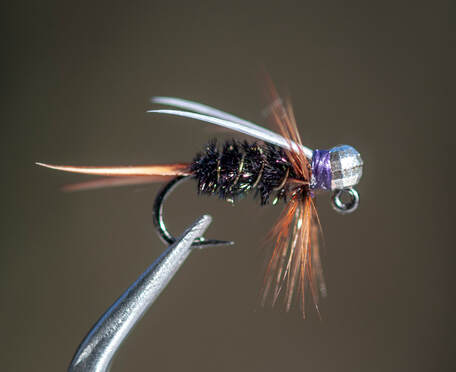It all seemed to begin with the crappie jig that anglers fished deep around bottom structures on ponds, natural lakes and reservoirs where these particular panfish reside. The jig head hook was genius. A fish hook with a weighted head that basically positions itself hook-up in such a manner that it is less likely to catch on bottom structures and be lost. Shop any bait and tackle shop today and the jig hook is a fair portion of the lure variety. Beyond the plain head jig hook, there are painted heads (with eyes) and each in lots of sizes and weights. The crappie jig is a pre-tied Chenille body and marabou tail in a variety of colors but the painted jig heads are used along with soft plastic squiggly tails of numerous designs. Actually, the lightest weight and smallest hook crappie jigs in a variety of colors work amazing well on delayed harvest trout streams.
An early, successful product on the market was the Trout Magnet which uses squiggly material attached to a gold-plated jig hook. So, as fly fishers discovered that these warmwater jig hooks and lures worked well to attract trout, the fly tyers among them began using the plain jig hook to tie nymph fly patterns. Fly Fishing competitions have spawned the genius in anglers of Europe, thus, Euro-Jig fly patterns have steadily evolved. Hook manufacturers are now producing jig hooks in much smaller sizes and weights that meet the demand of the fly fisher.
Kastrof’s Royal Prince
My first experience with a jig nymph was a guided trip down the Nantahala with Ken Kastrof. Floating the “Nanty” with Ken while the wheels are generating electricity is a true “whitewater fly fishing experience.” Ken specializes in this trip. He only allows one guest. He explains that as a guide he can only provide guidance to one person during the fast paced trip through the rapids - and you do catch really nice, large trout in the rapids as well as the runs if you carefully and exactly follow his guidance.
When he says prepare to cast to such and such pocket, you get ready. When he says casts, you cast with a sidearm cast as there is always overhanging branches where the trout lie in the pockets. Ken helped me rig a sighter tippet for his Royal Prince with two contrasting colors. Specifically, as you pass through the rapids, you must keep the jig nymph at the same depth by keeping the sighter tippet color change point at the surface. The jig bounces over any shallow places with protruding rocks and suspends above the bottom elsewhere. Large, hungry trout lie among the rocks in the rapids and respond aggressively to the Kastrof’s Royal Prince. Ken uses size 8 gold-plated jig heads for weight and flash and ties the prince pattern similar to the Prince Nymph except for the purple collar of royalty.
Royal Prince
Fly of the Month 2.21
Tom Adams and Alen Baker

